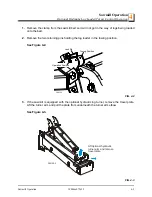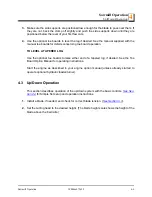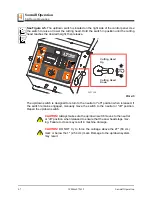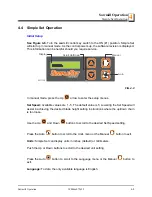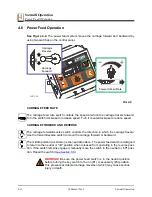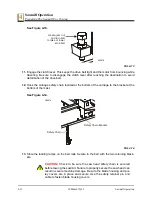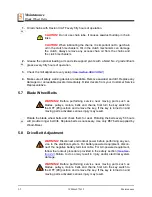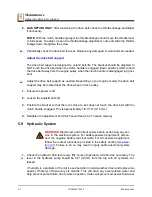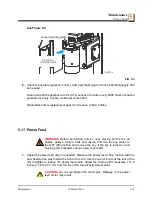
Sawmill Operation
Water Lube Operation
4
4-15
WMdoc072619
Sawmill Operation
trim cut. Return the carriage for the second cut and lower it 1 1/8" (29 mm) below the orig-
inal measurement. (The extra 1/8" (3 mm) allows for saw kerf and shrinkage of the lum-
ber.)
The yellow area on the scale identifies where the blade could encounter a side support or
log clamp. Check that these items are below the blade level before sawing.
THE QUARTER SCALE
The magnetic quarter scale has four sets of marks. Each set represents a specific lumber
thickness. Saw kerf and shrinkage allowance are included, but actual board thickness will
vary slightly depending on blade thickness and tooth set.
See Table 4-1.
To use the quarter scale, look at the blade height indicator.
Position the magnetic quarter scale over the inch scale. Align one of the quarter scale
marks with the horizontal line on the indicator.
Make a trim cut. When you return the carriage for a second cut, lower the carriage to the
next mark on the scale. This mark shows where the blade should be positioned to cut a
certain thickness of lumber, without having to measure on the inch scale.
Example:
You want to cut 1" (25 mm) (4/4) random width boards from a log. Position the
blade for the first cut. Position the magnetic quarter scale so a 4/4 mark is aligned with
the line on the indicator. Make a trim cut. Return the carriage for the second cut. Now,
instead of having to measure down 1 1/8" (29 mm) on the inch scale, you can simply
lower the blade so the indicator is aligned with the next 4/4 mark on the quarter scale.
Turn the log 90 degrees and repeat.
4.10 Water Lube Operation
The Water Lube System keeps the blade clean. Water flows from a 5-gallon (18.9 liter)
bottle through a hose to the blade guide where the blade enters the log. A valve in the
bottle cap controls the amount of water flow.
Standard Quarter Scale
Scale
Actual Board Thickness
4/4
1" (25 mm)
5/4
1 1/4" (32 mm)
6/4
1 1/2" (38 mm)
8/4
2" (51 mm)
TABLE 4-1


